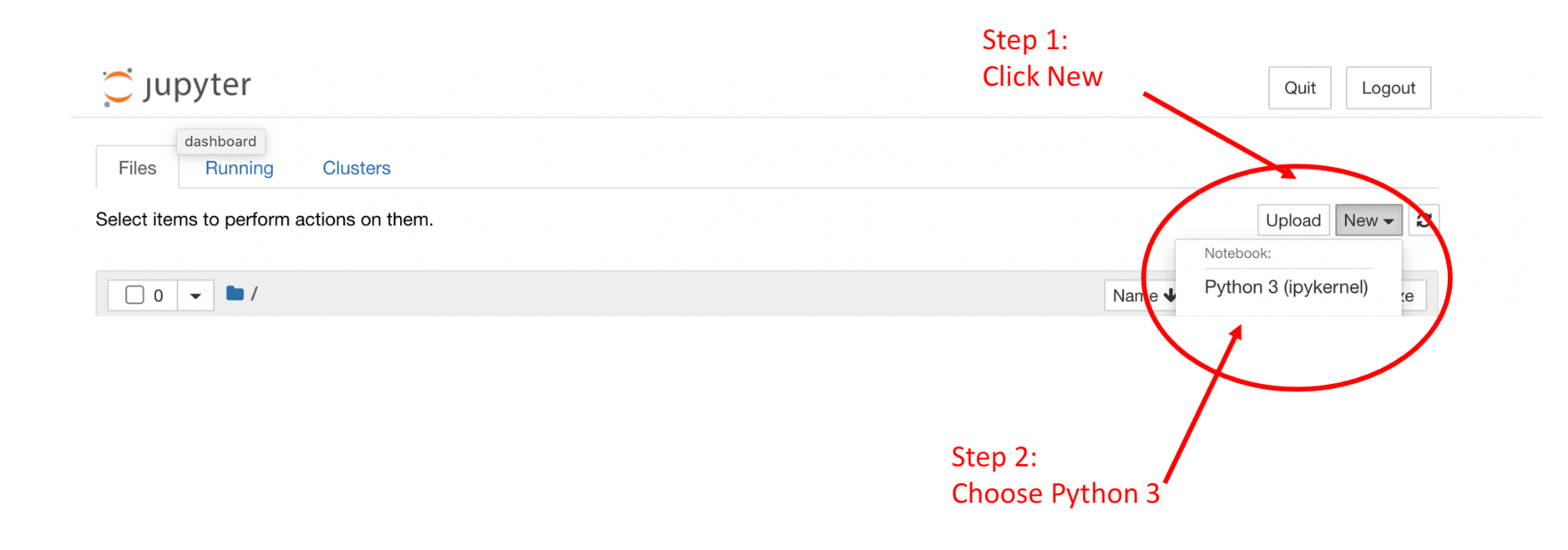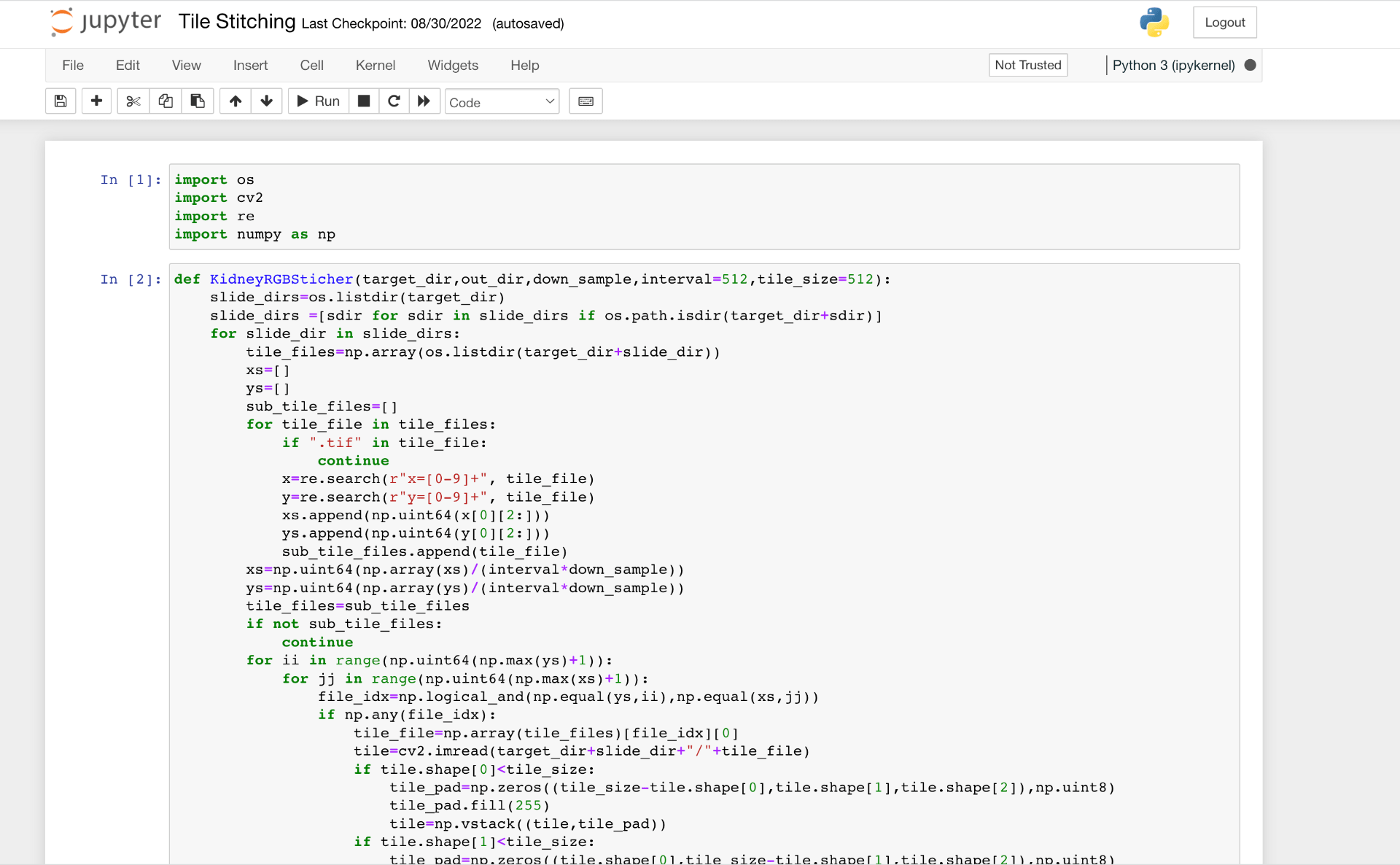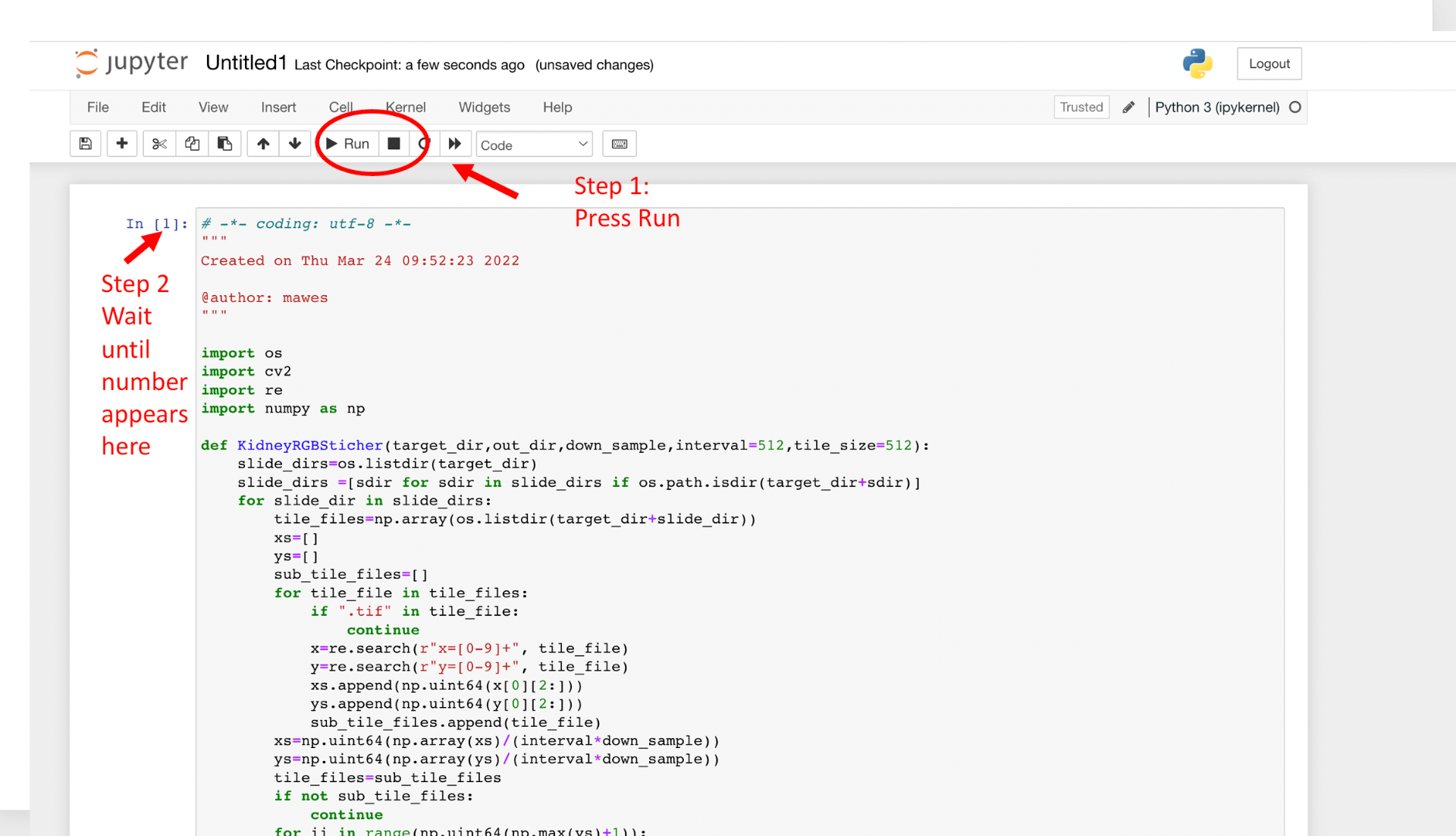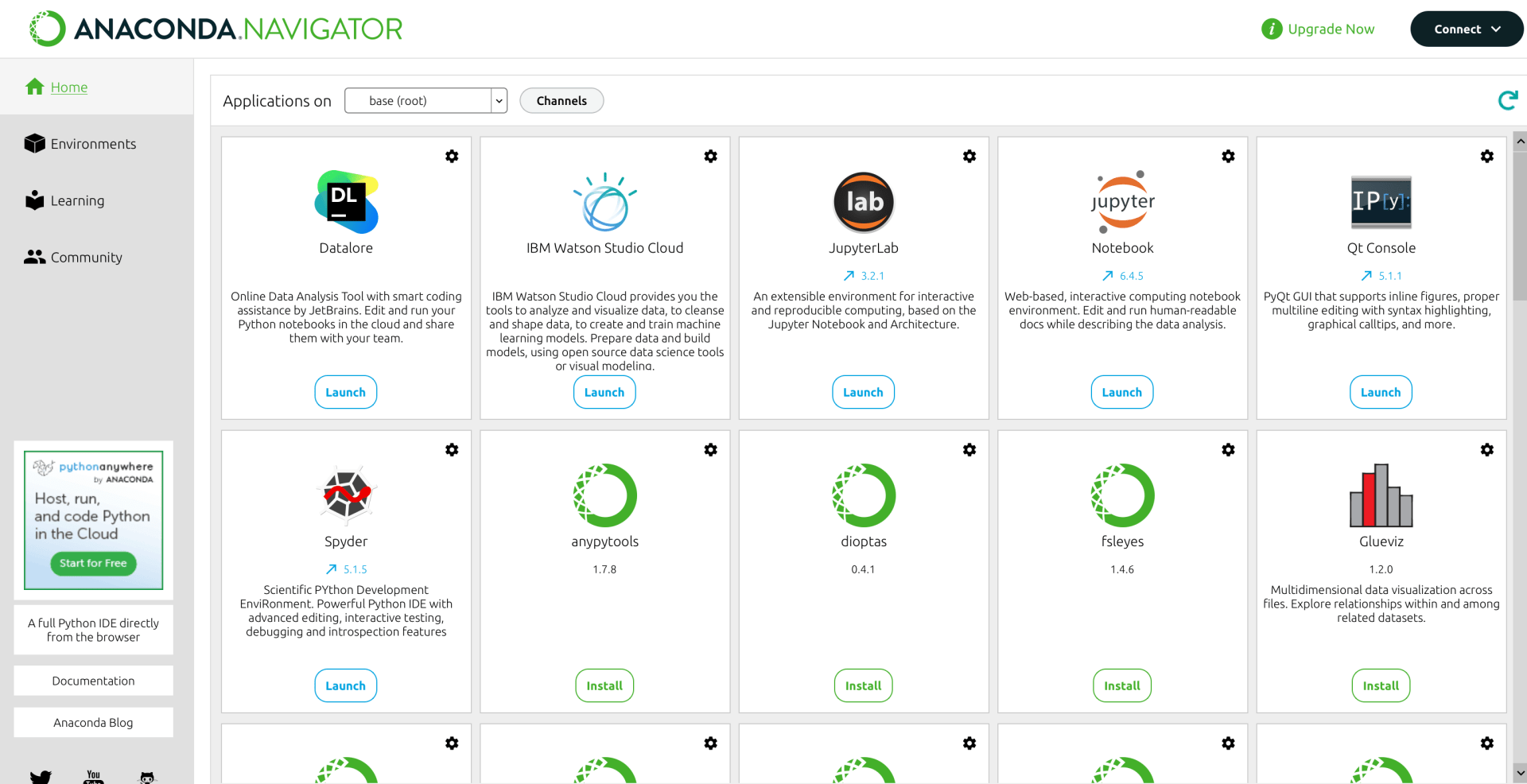Geropathology Imaging - Part of the The Jackson Laboratory Shock Center of Excellence in the Basic Biology of Aging
Stitching Tiles
This page will walk you through how to stitch tiles already downloaded from Qupath. If you have not installed these programs you can get directions to do that here Required Software there are also links to the manuals and tutorials that both groups provide. We also have links for how you can get Images from Omero to Qupath and Annotate slides in Qupath
We will do with in a Jupyter Notebook. There are two ways to open a notebook we will provide directions using anaconda but you can do this on the command line by following the directions in jupyter

A jupyter notebook should open in your browser
Open a new juptyer notebook using python 3


Copy the TileStitching.py script
You can get the script by downloading it from here https://github.com/TheJacksonLaboratory/DIY-Geropathology
Specific Tutorial on getting the code from Github is provided here (Note: use the TileStitching.py script)
https://www.geropathology-imaging.org/copying-groovy-script-from-github-for-qupath/
Choose Run


Add a New Cell
Adjust KidneyRGBSticher to match your project
Target_dir is directory where your tiles are this should be surrounded by single ‘
out_dir is the director where to put the stitched files should be surrounded by single ‘
down_sample = a number of downsampling to match the classifier you are using
Interval = matches size you are using
Tile_size is the tile size that matches the classifier


Choose Run
Stitched files .png should be in output directory for each slide


